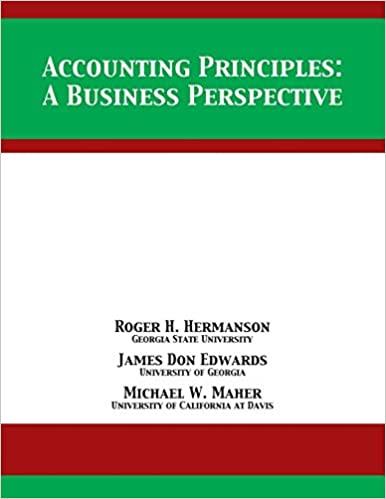Answered step by step
Verified Expert Solution
Question
1 Approved Answer
Silven Industries, which manufactures and sells summer lotions and insect repellents, has decided to diversify in order to stabilize sales throughout the year. A natural
Silven Industries, which manufactures and sells summer lotions and insect repellents, has decided to diversify in order to stabilize sales throughout the year. A natural area for the company to consider is the production of winter lotions and creams to prevent dry and chapped skin.
After considerable research, Silven developed a new lip balm called ChapOff that is sold to wholesalers in boxes of tubes for $ per box. Because of excess capacity, no additional fixed manufacturing overhead costs will be incurred to produce ChapOff. However, a $ charge for fixed manufacturing overhead will be absorbed by the product under the companys absorption costing system.
Using estimated sales and production of boxes of ChapOff, the Accounting Department developed the following manufacturing cost per box:
Direct material $
Direct labor
Manufacturing overhead
Total cost $
The costs above include the lip balm and the tube containing it As an alternative to making the tubes for ChapOff, Silven is considering buying them from an outside supplier for $ per box of tubes. If Silven Industries stops making the tubes and buys them from the outside supplier, its direct labor and variable manufacturing overhead costs per box of ChapOff would decrease by and its direct materials costs would drop by
Required:
If Silven buys its tubes from the outside supplier, how much of its own ChapOff manufacturing costs per box will it avoid? Hint: You need to separate the manufacturing overhead of $ per box shown above into its variable and fixed components.
What is the financial advantage disadvantage per box of ChapOff if Silven buys its tubes from the outside supplier?
What is the financial advantage disadvantage in total not per box if Silven buys boxes of tubes from the outside supplier?
Should Silven Industries make or buy the tubes?
What is the maximum price Silven should be willing to pay the outside supplier for a box of tubes?
Instead of sales of boxes of tubes, revised estimates show a sales volume of boxes of tubes. At this higher sales volume, Silven would need to rent extra equipment at a cost of $ per year to make the additional boxes of tubes. Assuming the outside supplier will not accept an order for less than boxes of tubes, what is the financial advantage disadvantage in total not per box if Silven buys boxes of tubes from the outside supplier? Given this new information, should Silven Industries make or buy the tubes?
Refer to the data in Required Assume the outside supplier will accept an order of any size for the tubes at a price of $ per box. How many boxes of tubes should Silven make? How many boxes of tubes should it buy from the outside supplier?
Step by Step Solution
There are 3 Steps involved in it
Step: 1

Get Instant Access to Expert-Tailored Solutions
See step-by-step solutions with expert insights and AI powered tools for academic success
Step: 2

Step: 3

Ace Your Homework with AI
Get the answers you need in no time with our AI-driven, step-by-step assistance
Get Started


